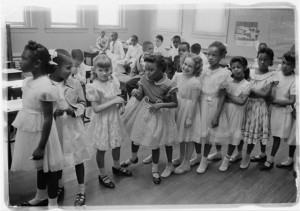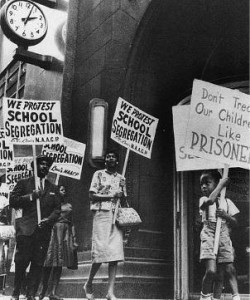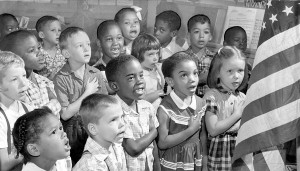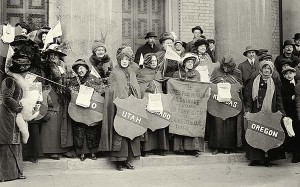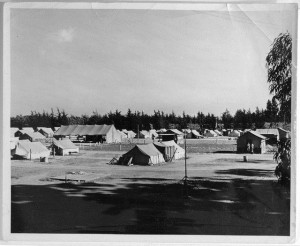Week Thirteen: Web Safety
Part One:
After learning this week about web security , I have decided to make some changes in how I use the internet every week. For example I have learned the correct way to create a password, and also not to use the same password for every site. In the past I have done this because it is easier for me to remember one password versus the many for every site I use daily. The reason I have never seen this as an issue is because I never really knew how high of a risk I ran each and every day I used the internet. Other than that I believe I am fairly secure online. I protect myself against viruses and do not download harmful information on to my computer. I do this by avoiding sites that would have this information on them. My internet usage accumulates data. My data for the most part is connected to school assignments. For the most part I use online resources for research. This data can be used by websites to see if their websites are popular, or commonly used. Search engine wise they can use the data from my previous searches in order to find similar things I would more likely be interested in, or to find useful.
Part Two:
At this point in my project I am pretty much complete with gathering materials needed for research. I have gathered a variety of both primary and secondary sources to use. All that is left is the final completion and piecing together all of the parts in order to create a final project that will tell the complete historical story. I am excited to use the Smithsonian site that provides information on the Bolling versus Sharpe case. This site is easy to use and has a timeline of events leading up to and following the case. It provides a great deal of information relevant to my topic. Other than that I am also excited to use the visual images. I am excited because not only does this topic have written works to describe conditions at the time, but it also has visual elements. By using the Library of Congress site I have found several different forms of visual images that can be utilized to really understand segregation and desegregation in Washington DC. I have not ran into any problems. I have found the material, and I understand the resources I have available to me. All that is left now is piecing together the final project.
Week Eleven: Omeka Exhibit
This exhibit will be a collection of written and visual sources collected from the 1950’s and 1960’s. These primary and secondary sources will reveal the conditions of the country and of the District of Colombia prior to and after integration of schools. By placing visual images, written accounts, videos, etc. by one another conclusions about the history of school integration in Washington DC can be made. Below is a list of the items that will make up this exhibit:
1. A written newspaper article on the history of Washington DC schools. http://www.washingtonpost.com/wp-srv/metro/interactives/dcschools/timeline/?hpid=topnews
2. A written case brief on Bolling versus Sharpe. http://www.oyez.org/cases/1950-1959/1952/1952_8
3. A photograph depicting Barnard School. One of the first schools to integrate following Bolling versus Sharpe.
4. This interactive site provides a background on several different schools and their conditions prior to integration. http://www.wdchumanities.org/bigreadexhibit/exhibits/show/dcsegregatedschools/ward-1
5. This photograph shows a group a protesters in Washington DC. It first appeared in a local newspaper. It reveals the tense conditions that existed at the time.
6. This documentary although it does not specifically focus on Washington DC it does capture the attitudes and conditions that existed at this time. Through interviews first hand accounts are captured from this time period. https://www.youtube.com/watch?v=U9ACS4PgDFA
Together the listed items will provide background on the conditions of the country prior to school integration. This collection will reveal why school integration eventually came about and how the previous conditions of the country influenced court cases such as Bolling versus Sharpe. Finally by analyzing these sources and understanding how they influenced integration the effects can be understood better.
Week Ten: Text Analysis
Text-mining is helpful if you can use it to find a new source. Like if you were looking for sources for a research topic. It would be helpful to search you topic in a database, and then the database would find articles, books, etc. that are on your topic. This would be a system like Google Ngram. Google Ngram was interesting because it allows you to search for books on your topic. It shows how many books were written on this topic and in which years books were published on this topic. Google Ngram searches through its database and pulls books that you may not be able to find on other databases; however, it is only limited to those that Google owns. Although Wordle creates an interesting image it does not help much in the actual research process. It does not help you find any new sources, but only creates a collage of repeated words from the document. Although this is interesting I do not think I would ever use it in an academic setting. Finally Test Voyant did not help me because it did not help me find any new sources, or make sense of sources that I already have. Like Wordle it only documented words that appeared most often. Not in a collage, but in a list. Once again I would not ever use this in an academic setting.
I feel more confident this week in the direction my project will take,as well as what exactly I will be doing my research on. I started with a broad topic that included a large amount of information. My vague plan has been streamlined, and I have a set research goal in mind thanks to writing my research proposal a few weeks ago. Last weeks map was helpful in really outlining the project. I figured out exactly what I wanted my project on and how I would go about doing this research. I have had difficulties, however, on finding a wide arrange of diverse secondary and primary sources to be used in the research of my project. Omeka has helped me a lot in creating a way to easily cite all of the sources I have also discovered Jstor has also been helpful in finding a large amount of sources to be used for research. As I come to the end of my research I am now ready to start piecing out my information in order to answer my research question and really understand the history of the integration of the John Phillips Sousa Junior High School.
Week Nine: Project Map
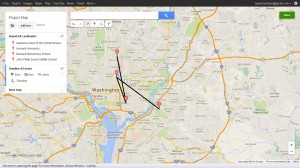 https://mapsengine.google.com/map/edit?authuser=0&hl=en&mid=zYv61qH1CLtU.ktQf0Bjbx7Ms
https://mapsengine.google.com/map/edit?authuser=0&hl=en&mid=zYv61qH1CLtU.ktQf0Bjbx7Ms
Making this map was simple. Google maps is an easy to use program. I started by choosing important places that were prevalent in the moments before and after this court case. I began with the actual school that began the case for integration. I then linked this to Howard University where the lawyer who argued for integration taught. Next I connected the Supreme Court where the case was actually fought. Finally I connected Barnard Elementary School, one of the many schools in the Washington DC area to integrate following the court case Bolling vs. Sharpe. I connected these events by the order in which they occurred.
I struggled at first with how to create layers, but this issue was easily resolved. Google maps offers online helps tools that explain step by step of how to complete any task you could ever want. I think this is an useful tool for any assignment that includes different locations, especially when discussing historical events. After making this map I realized how interconnected the events were in both time and space. After making a visual timeline I could really see how each event led to another.
Week Six: Copyrights
Copyright laws were first created so that artists, inventors, and musicians after publishing a work of art could have a way to claim it as their own. Copyright protected these creators from having their work claimed by someone else as their own. It was made a law in the United States so that all citizens referring to or using another person’s work must state where and when they accessed the material. The cartoon of Calvin and Hobbes pictured on the “assignments” page on the homepage of “the notebook,” violates the copyright regulations and laws as described by the United State’s government. On this site the cartoon is posted with no is clear source for the material included anywhere. The photo does not have a citation that reveals a site where you can find this cartoon’s history, or the history of it’s creator. This citation should also include a source giving the creator credit for the image that he has posted to the public. For this reason it violates copyright laws and regulations. In order to use this cartoon on a website its source must be stated and the author must be credited for his work. Unless this is done the work is in violation of this law.
Week Five: Research of Final Topic
After completing my preliminary research, I have eliminated two possible topics for my final project, I have decided to look more in to segregation and then eventually integration in schools in Washington DC. Just in my preliminary research I found an ample amount of information on this topic. I will continue my research on this topic by looking through the website I found ran by the Smithsonian Museum of American Art. This website offered a substantial amount of information on this one topic, such as supreme court cases and information on schools before and after integration. After that I would continue my research on the site for the Library of Congress. This site offers primary and secondary sources from pictures, to books, to newspaper articles. From this site I can really learn what the conditions were like at the time from first hand accounts. Also I can learn what scholars think of segregation now focusing primarily in the nation’s capital. Finally I will conclude my extensive research by logging on to George Mason University libraries’ home page and then search the database “American: History and Life.” Then I will complete a boolean search for topics such as segregation and schools and Washington DC. This will also provide me with primary and secondary sources. The primary sources will give me insight on what was actually occurring within the capital at the time. The secondary sources will show what scholars believe happened, as well as how segregation has effected the nation capital’s schools today.
Week Four: Research on Possible Topics
As I begin my final project, I first begin by starting to look for possible topics. My first idea is to study the differences between schools in various parts of Washington D.C. Primarily focusing on comparing areas with higher income against those with lower incomes. I would like in my research to discover if there are major differences in the education systems depending on where you live within the nation’s capital. I would also like to analyze past events and try to determine if there were any large factors that led to any discrepancies between school systems in different areas. This topic is particularly interesting to me because I am planning on going in to the teaching field, particularly in this area. I believe researching this topic would aid me when I choose exactly where to live later in life. I also think overall this topic is important because our nation’s capital should have the best school systems in order to act as a role model for other schools in our country. If schools are not up to this standard the government should do something to fix this problem. I would begin my research for this particular topic by searching “education in Washington D.C” in an inPrimo search on our university libraries’ home page. I would then use the search results to find current articles on the conditions of education in the city now. Next I would search for the past conditions of schools in the capital by limiting the search results to only those published before the 1900’s. After gathering all this information I would then compare time period, as well as areas of high income versus those with lower income.
A second possible topic that I am considering also has to do with the schooling system in Washington D.C; however, this topic deals specifically with segregation and the movement towards integration. I would analyze segregations long lasting effects on the capital by first researching the past history, and then comparing the results to the conditions now within school systems that were once segregated. I believe this is an important topic because conditions in the past effect conditions in schools today, and unfortunately there are many issues within school districts today. I would like to see if there is any correlation between the two. After doing some quick research on this topic to see if it was even an option, I discovered a helpful site created by the Smithsonian Museum of American History. This site offers a great deal of information specifically on this topic. For example it lists the names of schools that were segregated, there locations within the capital, as well as the supreme court cases that existed that eventually ended segregation within the school system. Finally I would finish my preliminary research by looking up conditions of schools in D.C. today to see the effects segregation has had on schools. I would once again complete an inPrimo search on the university school’s site, but limit the dates to those after 2001. I would then compare both results to see if there is any correlation between conditions now and segregation of schools in the past.
The final topic that I am considering is unlike the other two that I previously mentioned. My final topic deals with how the use of drugs has shaped the history of Washington D.C. Drug use has shaped American history overall, but I would like to focus specifically on how it has shaped history in the nation’s capital. I think this is important because unfortunately not only has drug use changed life in the past, but it still is a big part of life in D.C today. I would do research for this topic by performing a search on the Infoguides on George Mason University’s library page. I would then go to the history section and search in the America: History and Life area. Finally I would perform a boolean search for drugs and then Washington D.C. From this I would search through the articles for any that would shed light on my intended topic. After gathering this information I would then begin to piece together how drug use shaped the past of Washington D.C.
Week Three: Digital Primary Sources
Each primary source that I evaluated reveals a little about the past of Washington DC. By analyzing these two documents I hoped not only to gain insight about the capital’s past, but also practice on how to analyze a primary source. The first source I analyzed was a newspaper from 1914. This newspaper was entitled the Washington Herald. I then sourced the paper by researching its history. I discovered that theWashington Herald was a daily newspaper that existed throughout the 1900’s. Also later this paper would become the Washington Post. After glancing over the document I realized in order to understand the paper fully I needed to research what was going on in the nation at the time. This paper specifically talks about problems between the United States and the bordering nation Mexico. Right in the center of the paper there is a large political cartoon depicting America’s current relations with Mexico. Also the main article of the day discusses the terrible conditions that existed in Mexico at this time. I contextualized the information with current events in 1914 and discovered that at this time Victoriano Huerta had become the President of Mexico during an internal Civil War. I also learned that Woodrow Wilson wanted Huerta to resign from the presidency, which added to the tense relations between the United States and Mexico. After learning this background information it was easier to make a closer reading of this document. Analyzing the cartoon again, I realized it depicts Uncle Sam (representing America) handing a child (depicting Mexico) soap and a basin for water each labeled ammunition and fire arms respectively. Uncle Sam is telling the boy to “clean himself up.” The main article then goes on to explain how terrible the conditions were in Mexico. There is fighting for the presidency and Huerta is just barely holding on to power. The story discusses how Huerta barricaded himself in his palace with machine guns all around. After analyzing this source I learned a lot about the conditions between Mexico and the United States at the time and what was the US was willing to do to stop the fighting in Mexico, thus securing America’s safety.
The second source that I focused on was a photograph taken of several suffragettes each holding a sign with different states’ names written on them. Also a banner is shown being held by a women that states that the women marched from New York to Washington DC in 1913. I began once again by sourcing this document; however for the photograph there was less research to do. Although it is unclear which original newspaper this photograph was taken from I was able to discover it is part of the Bain Collection. I researched the Bain Collection and discovered it was a series of photos dating from the 1800’s and 1900’s. Each was collected by the photographer George Grantham Bain from newspapers across the nation, and eventually donated to the Library of Congress. I next contextualized the information by researching the history of this particular march made in the capital. I learned this march was down Pennsylvania Avenue and was scheduled for the same day as Woodrow Wilson’s inauguration. Its goal was to bring awareness to the nation about the needed amendment which would give women the right to vote. The march was organized by Alice Paul and the National American Women Suffrage Association. After learning this information and then looking closer at the document I made the discovery that each state written on a sign was a state in which women already posses the right to vote. This one document shed light on the state of the country at the time. It was a struggle for women to gain their right to vote. It required an act of courage such as protesting during a president’s inauguration.
From these sources I learned about the rich past the District of Colombia possess. As our nation’s capital it has been witness to many protests and marches over the years. As the center of our government it has been the focus of much political turmoil and interest since its creation.
After analyzing both documents I realized that it was harder to work with a photograph than a newspaper. Exact sources for the document were unavailable. This meant you only have the image in front of you to decipher the exact time, date and context of the photo. This would be an even harder task if the picture was unclear or had no source information at all. The newspaper is a better primary source to use because it tells you all of the national and local events that were occurring at this particular time. It also provides the exact time and place of its publication. Providing the exact publication date makes it easy to discover all of the background information about the events documented in the paper’s articles.
Week Two: Website Reviews
I first evaluated the website The Black Past. This website is topical, it deals specifically with African American history. This website is interesting because it serves several purposes. For example, it offers tabs with links to other similar websites, it offers information specifically on the history of the African American race, and finally it offers tools that allows a person to donate to continue supporting this site. It offers many entries on people, places, and events from the past. Entries span over thousands of years, as well as countless of places across the globe. The purpose of providing this information is to highlight the past of a race of people, as well as offer support to those seeking information about their own past, through tools such as genealogy tracers.There is a board of directors listed on this website who work in many fields across the country and support the upkeep of this website and its information. Each is a credible professional in a history, or some other related field. The creators of the site hope that by teaching people about African American’s past they will learn to be accepting of more races in the future. They also show their support of all minorities by including inspirational stories and recording individuals accomplishments. This site is easy to use and is helpful for both students and just a person curious about their own past. At the end of each post there is accurately cited material for each informative entry. The website is objective because it does not endorse that any minority is better than another. .I really enjoyed looking through this website. All of the information was accurate and detailed. Also it was easy to use.
Secondly I evaluated the website named Voices from the Dust Bowl. This website offers several sources that document the everyday lives of the people living in Migrant Work camps in California from 1940-1941. This website is an archive of songs, conversations, stories, and camp court proceedings from this time period. The Library of Congress keeps this site up and running so that Congressman and everyday Americans can use this website. Although not visually appealing this website is easy to use. It contains a lot of well kept information that is documented well. For example if viewing a photograph, you can easily read where this photo took place, when this photo took place, and where to find this photo in the National Archives. I believe this website could be used in a classroom setting, or for a research paper. This is due to the fact that it offers many primary sources from this particular time period all in easily accessible in one place. This website is objective, and has no real opinions within it. The material was collected over a long period of time and is documented well. My only problem with this site is that it is specific to a time and place. All information could be used in a paper, but it may not be as helpful as other sites that give you an overall view of all Americans impacted by the dust bowl.
Week One: My Digital Autobiography
My name is Taylor Morhiser, I am a freshman at George Mason University currently majoring in English. I hope to graduate in the next five years with my masters specializing in teaching English as a second language. I am excited to be taking History 390 this semester. I hope this class will teach me different tools for conducting research online; furthermore, I hope this class teaches me how to utilize online tools to express what I have learned. I believe these are essential skills to possess in a modern world.
Everyday I utilize online resources for my entertainment, as well as for school purposes. For example, like most people today I communicate with those around me through social media. Social media such as Facebook and Twitter. Another simple tool I use for communication daily is texting. This is a quick and easy way to communicate with friends and family. In regards to school, if I have a question about an assignment the fastest way to find the answer is to email the professor. Also professors will often send there instructions through email, or post them on a website that is accessible to the whole class. Assignments are mostly submitted online as well, through email or some other online tool. All research that I must do for school is done online. I utilize the many websites that search engines have to offer, as well as the online library tools that George Mason offers. Finally I have just recently begun reading textbooks online. It is easier than ever to access books online in a matter of seconds and read them in any place. As technology advances new ways to complete tasks are created that make the process faster than ever.
 1 Comment
1 Comment